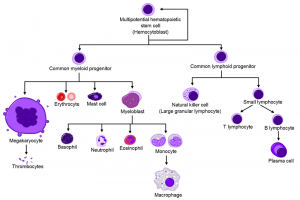W.B.C.S. Examination Notes On – Cell Lineage – Zoology Notes.
Studies of the role of cell lineage in development began in the latter part of the 19th century, fell into decline in the early part of the 20th, and were revived about 20 years ago.Continue Reading W.B.C.S. Examination Notes On – Cell Lineage – Zoology Notes.
This recent revival was accompanied by the introduction of new and powerful analytical techniques. Concepts of importance for cell lineage studies include the principal division modes by which a cell may give rise to its descendant clone (proliferative, stem cell and diversifying); developmental determinacy, or indeterminacy, which refer to the degree to which the normal cleavage pattern of the early embryo and the developmental fate of its individual cells is, or is not, the same in specimen after specimen; commitment, which refers to the restriction of the developmental potential of a pluripotent embryonic cell; and equivalence group, which refers to two or more equivalently pluripotent cell clones that normally take on different fates but of which under abnormal conditions one clone can take on the fate of another.
Cell lineage can be inferred to have a causative role in developmental cell fate in embryos in which induced changes in cell division patterns lead to changes in cell fate. Moreover, such a causative role of cell lineage is suggested by cases where homologous cell types characteristic of a symmetrical and longitudinally metameric body plan arise via homologous cell lineages. The developmental pathways of commitment to particular cell fates proceed according to a mixed typologic and topographic hierarchy, which appears to reflect an evolutionary compromise between maximizing the ease of ordering the spatial distribution of the determinants of commitment and minimizing the need for migration of differentially committed embryonic cells.
Comparison of the developmental cell lineages in leeches and insects indicates that the early course of embryogenesis is radically different in these phyletically related taxa. This evolutionary divergence of the course of early embryogenesis appears to be attributable to an increasing prevalence of polyclonal rather than monoclonal commitment in the phylogenetic line leading from an annelid-like ancestor to insects.
Cell Lineage and Fate Determination provides a comprehensive view of the mechanisms regulating cell lineage and fate determination in an effort to understand how the fertilized egg is transformed into a complex of specialized tissues.
It presents basic information on eight different animal models and recent developmental biological research done in each model. The book provides a focused forum presenting key information for researchers studying various aspects of developmental and cellular biology. Extensive use of tables and black-and-white and color figures helps illustrate each model. The book concludes by discussing future goals for bringing cellular, molecular, and genetic research to clinical applications and tissue replacement therapies.
Please subscribe here to get all future updates on this post/page/category/website


 Toll Free 1800 572 9282
Toll Free 1800 572 9282  mailus@wbcsmadeeasy.in
mailus@wbcsmadeeasy.in



















































































































